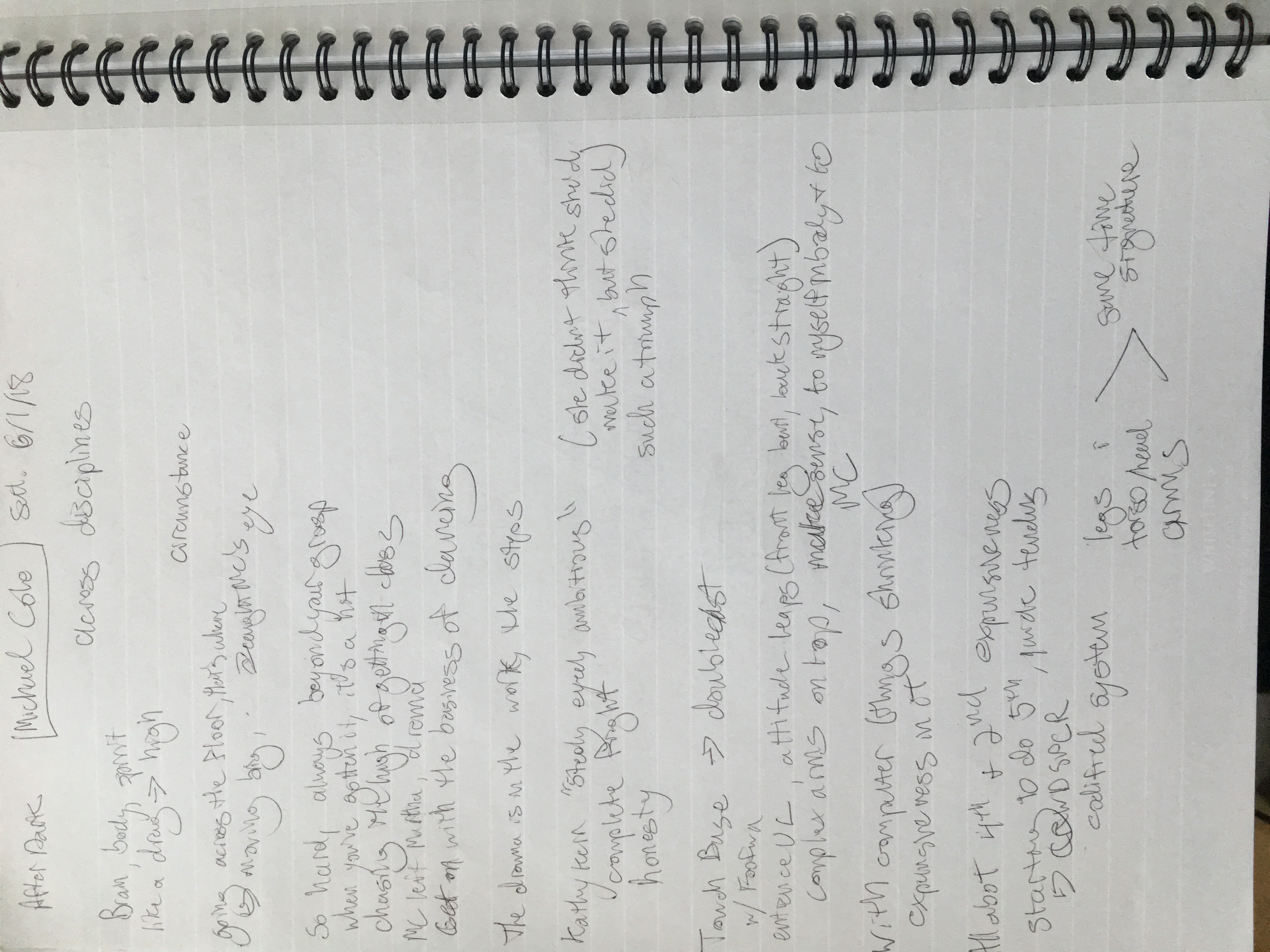On a cold Saturday morning in January, I walked from the subway to Michael Cole’s apartment in the East Village. I found key in the front door, but called Michael on the buzzer anyway. He buzzed me into his building. I came upstairs to greet him, and while he left the apartment in order to return the key I’d found in the door, I took the chance to snoop around, looking at the photographs on the wall. The black and white photographs of Michael Cole in various Cunningham dances made me smile in recognition. It was a strange realization of having seen him on video, and to have something like those images again.
That worked for Michael Cole. Michael caught Merce's eye in class. In the 1980s Merce’s classes (and his dances) were full of large second and fourth positions, with tilts and big curves of the spine. This kind of expansive dancing, where positions are pushed to the edges of the body and then a little bit further is something that I find so exciting in class. In performance, adrenaline can push you to move bigger, quicker, higher, but to actively practice moving beyond the dimensions of the body in class is folded into the aims of the technique itself. Of course, this style of moving bigger might have served as a way to capture Merce's attention in class, in the structure of the school as a recruiting ground, it became a part of the vernacular and style of Cunningham technique. Michael described the high of dancing in exercises which moved through space and across the studio. He told me that Cunningham technique class was “always beyond your grasp” but then "when you've gotten it, it's a hit." Like a drug habit, the high was elusive.
He fixed a coffee for me he asked me to about myself. In particular he wanted to know why Cunningham? I quickly went through my personal dance history, trying to prove my Cunningham bona fides, my familiarity with the technique class, the number of pieces I'd learned in workshops, pieces I'd performed publicly, but I also tried to put Cunningham in relationship to the other dance work I’d done outside of it as if to say, “I’m not only a Cunningham groupie.”
The notebook “ends up being an end in itself.” This displacement of attention back onto itself seems eerily like devotion: the devotion to the object of devotion is replaced by the devotion to devotion itself becoming object of devotion.
A notebook is of course not only a thing, but a performative object. That is, a particular collection of pieces of paper serve as record of a particular subject at a particular event in space and time, and thus act in the world as that record.
Conversations and their traces memorialized in my notebooks have become an important and meaningful tool of documentation in this course of study. In Michael Taussig’s essay Fieldwork Notebooks he traces a particular history of the notebook as a fetish: “an object we hold so dear as to seem possessed by spiritual power. While it is a thing— in the deader-than-dead sense we may attach to a thing— it is nevertheless revered to the extent that it can come to stand over you and turn you into its willing accomplice, if not slave.”
Before I could considered asking him if I could record our conversation, the discussion had begun to flow back and forth. I was worried that by recording it might cause him or me to feel as if we were speaking for the record. But I picked up my pen and paper jotting down what I stuck out to me. The decision to not create an audio record, and instead takes notes, has significantly influenced how I remember what I remember, and is already a movement of translation and transcription.
Returning to that cold January morning in 2017, I asked Michael how he understood devotion in Cunningham's work. His explanation was relatively straight-forward. “All the classical modern dance techniques required devotion to the technique of the particular choreographer,” and that once a dancer found 'their' technique (“the one that spoke to them”) the dancer would stick with it. Of course, these classical modern dance techniques were situated in a particular historical and cultural moment in the United States (particularly New York City) where a few American modern choreographers were able to have reliable access to large rehearsal and classroom spaces which served as training and recruiting grounds. Taking class in one of those schools meant dancers were seen in the same space again and again, doing the same (or similar) classes again and again, and hoping to be noticed enough.
